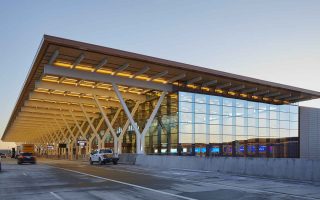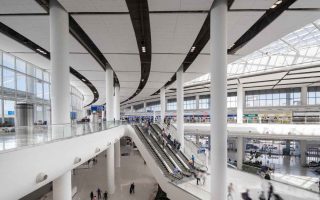Ottawa, as the capital of Canada, is not only a political and cultural center, but also a vibrant modern city. For many tourists, understanding Ottawa’s public transportation system is the first step to explore the city.
Ottawa’s public transportation system consists of buses and light rail, covering the downtown area and surrounding areas. Whether you want to visit museums in the city center, visit Parliament Hill, or experience the natural beauty of Ottawa, using public transportation is convenient and efficient.
1. Overview of Ottawa Public Transportation
Ottawa’s public transportation is operated by Ottawa Public Transportation Company (OC Transpo) and covers a wide range. The public transportation system mainly consists of two modes of transportation: buses and light rail. The connection between the two is very close, and proper cooperation can greatly improve travel efficiency. Whether it is a short trip within the city or a long trip to the suburbs, you can use these two modes to easily reach your destination.
1.1 Bus System
Ottawa’s bus system is a major component of public transportation, with multiple routes throughout the city and surrounding communities. Buses not only cover the central urban area of Ottawa, but also extend to the outer areas of the city, providing seamless connections from residential areas to commercial areas, attractions and transportation hubs. The reasonable arrangement of bus stops and timetables ensures that citizens and tourists can easily reach their destinations.
1.2 Light Rail System
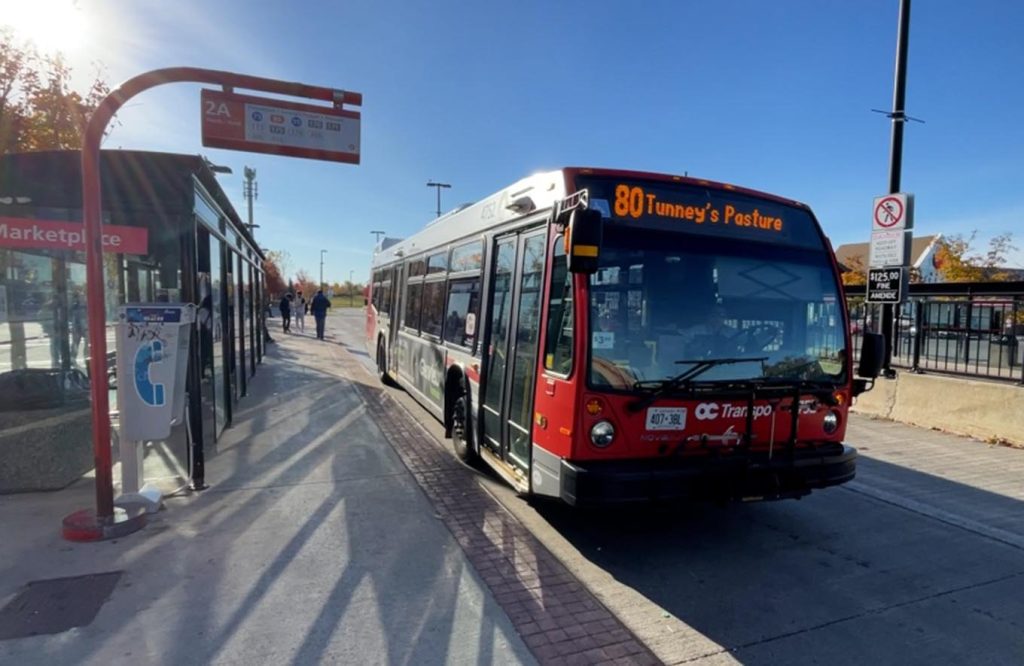
Ottawa’s light rail system (OC Transpo LRT, light rail system) has only been put into use in recent years. Modern transportation has not only improved travel efficiency, but also become a highlight of Ottawa. The light rail lines mainly connect the core areas of Ottawa and some communities in the west and east. It is an important means of transportation connecting various important areas of the city. Compared with the bus system, the light rail is faster and has a larger transportation capacity, which is very suitable for travelers who need to quickly cross the city’s core area.
2. Detailed explanation of Ottawa’s bus system
Ottawa’s bus system consists of multiple lines, covering the city and surrounding areas. The bus schedule and fare are reasonable, and there are multiple different types of tickets and preferential policies to meet different travel needs. Understanding bus routes, stops and how to buy tickets is the basis for ensuring a smooth trip.
2.1 Bus routes and stops
Ottawa has a wide range of bus services, with dozens of routes, including loops within the city, long-distance routes from the suburbs to the city center, and special routes to major attractions. The main bus routes include:
City core routes: These routes serve Ottawa’s city center, connecting landmarks such as Parliament Hill, Byward Market, and the University of Ottawa.
Suburban routes: These bus routes serve Ottawa’s surrounding areas, including Algerie, Campbell and Napier.
Special attraction routes: There are some routes designed specifically for tourists, connecting the city center with major tourist attractions, such as the Ottawa River, the Canadian Museum of History and the Ottawa Botanical Gardens.
In Ottawa, every bus stop has clear signs and route maps to help you quickly find the stop and route at your destination. There are usually electronic displays near the bus station that update the arrival time of the next bus in real time.
2.2 Bus fares and ticket purchase methods
Ottawa’s buses use a single fare system, and the fare has different charges based on the length of the journey and the age of the passenger. Adult fares are usually 2.95 Canadian dollars per trip (subject to change). In addition, Ottawa’s bus system also provides monthly and season passes, which are suitable for tourists or residents who stay for a long time.
Ticket purchase methods:
Cash payment: You can pay cash directly on the bus, and the driver will provide change.
PRESTO card: This is the most common transportation card in Ottawa. It can be swiped on the bus, which is convenient and fast. PRESTO card can also be used for public transportation systems in other cities. It is a very practical payment tool.
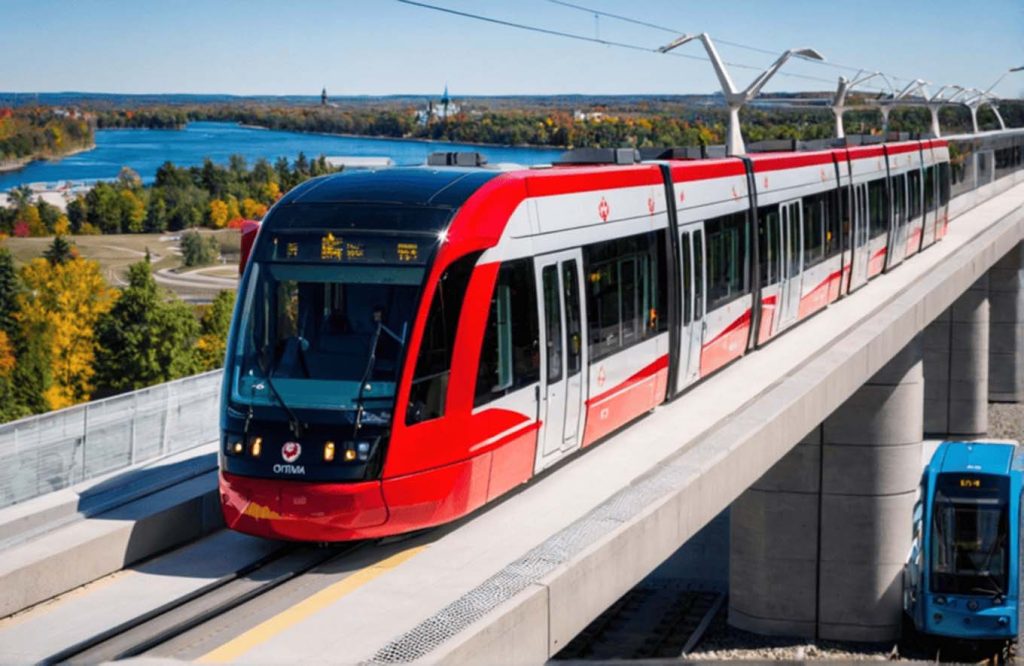
Mobile payment: Some buses support payment through mobile applications. You only need to download the relevant payment application and bind it.
2.3 Advantages and disadvantages of buses
Advantages:
High flexibility: The bus stops are very flexible and can directly reach most residential and commercial areas.
Economical fares: For tourists who travel alone, the bus fares are relatively affordable.
Wide coverage: Most areas in Ottawa are covered by bus routes, and you can reach almost any place you want to go.
Disadvantages:
Crowded during rush hour: Buses can be crowded during rush hour in the morning and evening, especially in the downtown area.
Relatively slow speed: Due to heavy traffic and multiple stops, buses travel relatively slowly, which is suitable for short trips, but not for travelers who need to arrive quickly.
3. Detailed explanation of Ottawa’s light rail system
Since its opening in 2019, Ottawa’s light rail system has quickly become a core component of urban transportation. Compared with traditional buses, light rail has higher speeds and less traffic congestion, which is particularly suitable for tourists and residents who need to cross the city quickly.
3.1 Light rail lines and stations
Ottawa’s light rail system is currently divided into two main lines: the Red Line (Line 1) and the Blue Line (Line 2).
Red Line (Line 1): Connects the west and east of downtown Ottawa, from **Balfa (Blair) Station to Almont (Tunney’s Pasture)** Station, passing through several major stations such as Ottawa University Station, Byward Market Station and Parliament Hill Station.
Blue Line (Line 2): Serving the western and southern areas of Ottawa, it mainly connects Constitution Street and Ottawa International Airport.
The light rail stations are equipped with modern facilities, providing convenient access and real-time arrival information. In the downtown area, the light rail is the fastest way to travel, especially during peak hours, when the light rail is faster than the bus.
3.2 Light rail fares and ticket purchase methods
Light rail fares are similar to bus fares, with different fare standards depending on the length of the journey and the identity of the passengers. Generally speaking, the adult fare is about 3 Canadian dollars. Like buses, tourists can choose to pay with PRESTO cards, cash or mobile phones.
Ticket purchase methods:
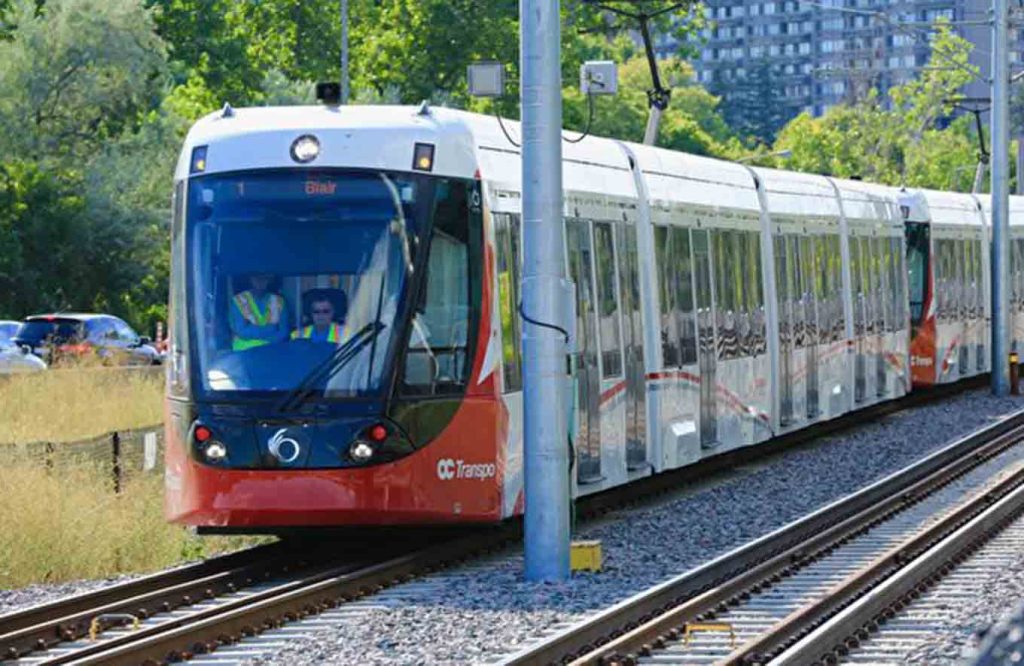
PRESTO card: This is a rechargeable transportation card that can be used for both light rail and buses, and payment is fast and convenient.
Mobile applications: Ottawa’s light rail system supports payment through relevant mobile applications. You can download and bind a bank card for payment to save cash and card usage.
3.3 Advantages and Disadvantages of Light Rail
Advantages:
Fast and convenient: The light rail system is fast and avoids urban traffic congestion, making it the best choice for crossing the city.
Punctual and reliable: Compared with buses, light rail has more stable operating hours and is less affected by weather and traffic conditions.
Modern facilities: Light rail stations have advanced facilities, air conditioning and barrier-free access, which is very suitable for the elderly and tourists with limited mobility.
Disadvantages:
Small coverage: Although the light rail system is very efficient in the city center and some areas, its coverage is limited and cannot completely replace the bus system.
High construction and maintenance costs: The construction and maintenance costs of light rail lines are high, so the fares are relatively high, especially for short-distance travelers, which may not be as cost-effective as buses.
4. Tips for public transportation in Ottawa
4.1 Notes during peak hours
Public transportation in Ottawa is busier during peak hours in the morning and evening, especially between 8 and 9 in the morning and 5 and 6 in the afternoon on weekdays. It is recommended to avoid peak hours and try to travel during off-peak hours to avoid being inconvenienced by crowded carriages. If you have to travel during peak hours, you can plan your route in advance and leave enough time.
4.2 Familiarize yourself with transportation routes and schedules
Before you start using the public transportation system, it is best to check the bus and light rail schedules through OC Transpo’s official channels (such as station information, applications, etc.), especially during holidays or special events, some routes may be adjusted.
4.3 Use booking and payment applications
Ottawa’s public transportation system supports a variety of booking and payment methods. You can use mobile applications for real-time inquiries, payment fares, and even purchase tickets or monthly passes for multiple trips through these applications. This is not only convenient and fast, but also saves time.
Ottawa’s public transportation system, especially the combination of buses and light rail, provides great convenience and flexibility. Whether you are a first-time visitor to Ottawa or a long-term resident, you can enjoy a convenient and efficient travel experience by choosing the right transportation method.
Understanding the benefits, fares, and usage of each mode of transportation can help you maximize your use of the public transportation system and make traveling in Ottawa easier and more enjoyable.

